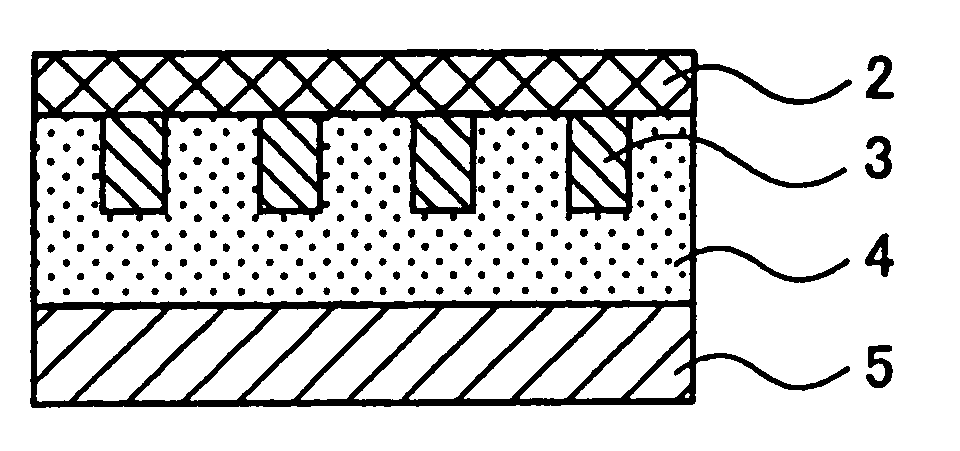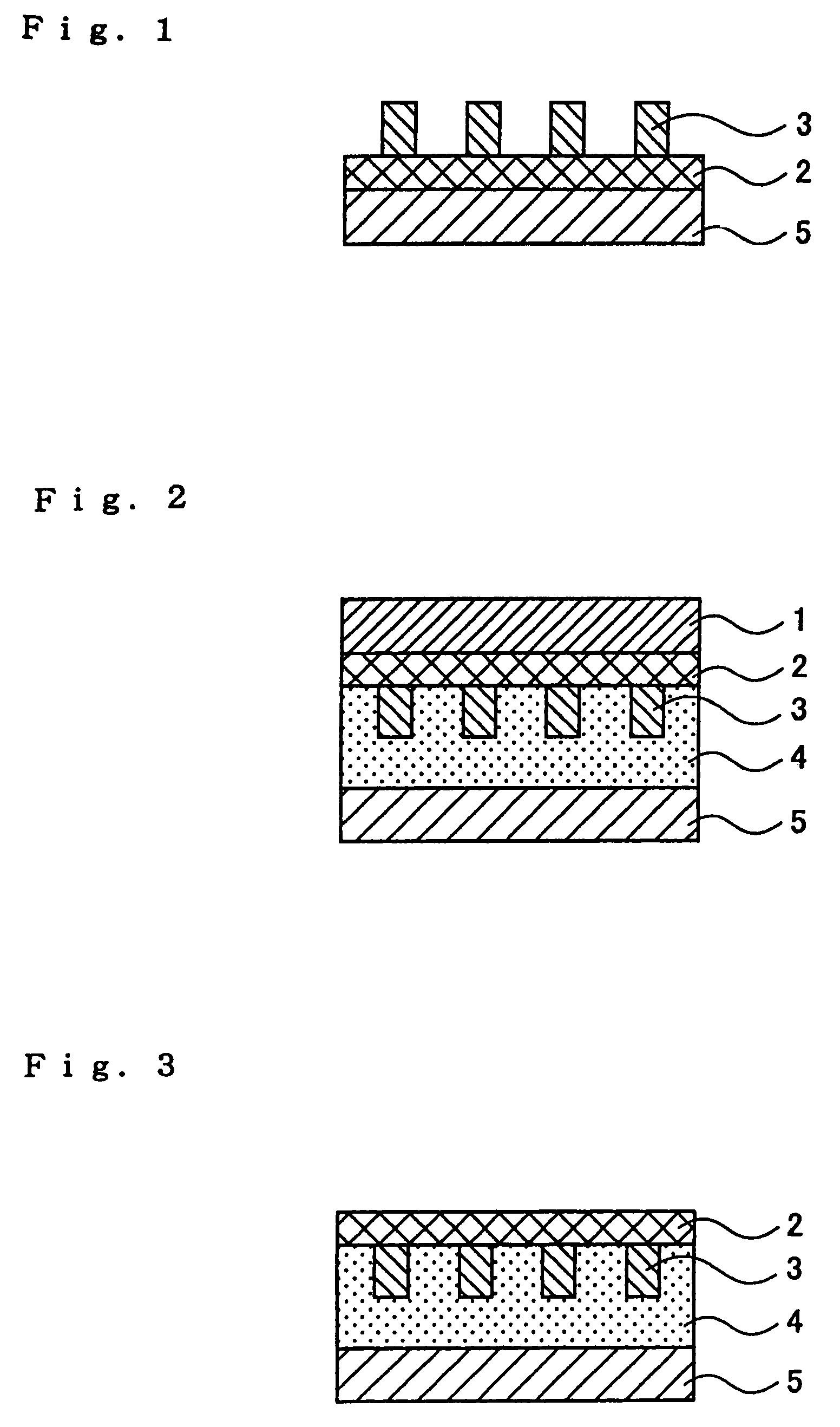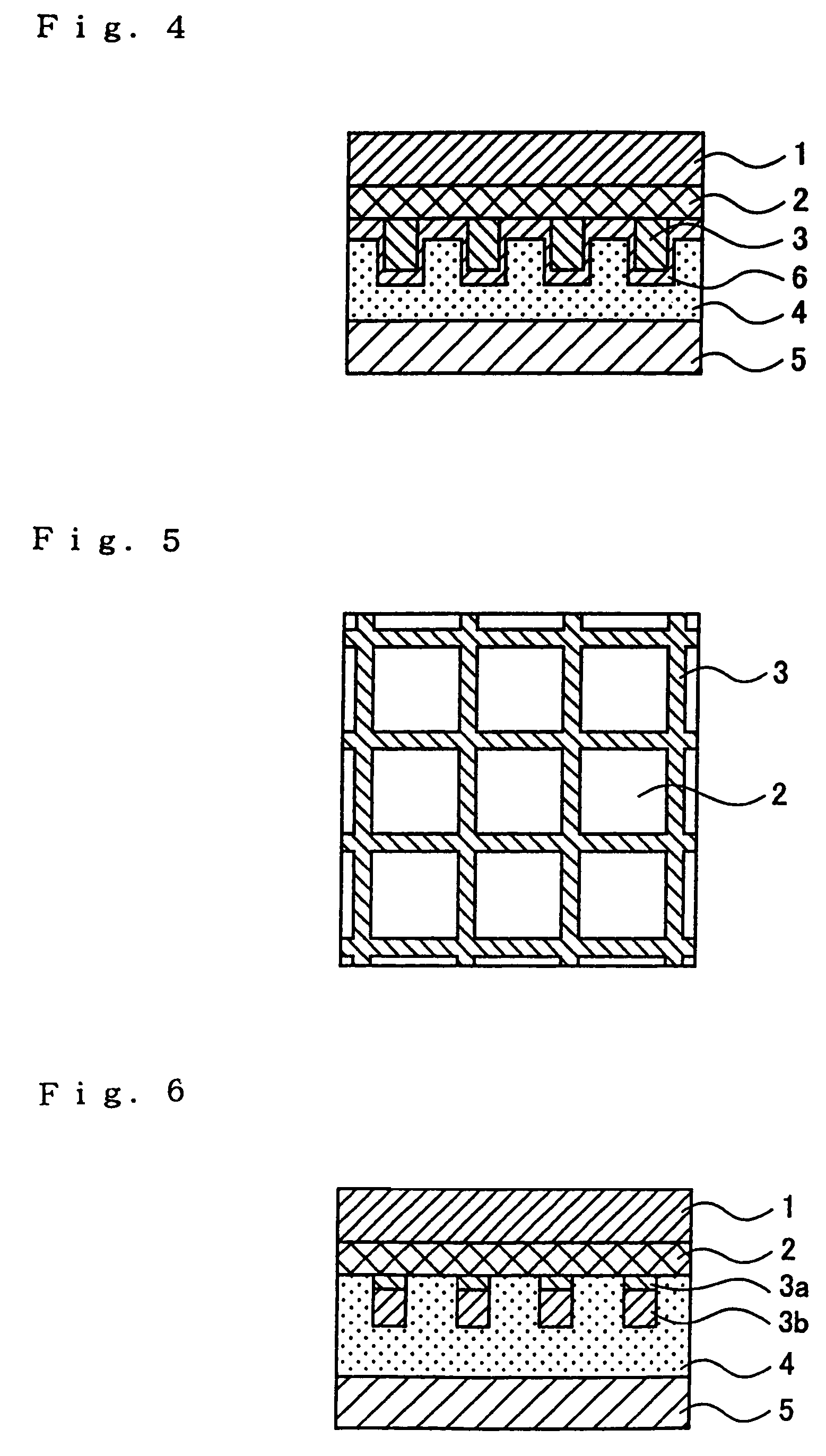Transparent conductive multi-layer structure, process for its manufacture and device making use of transparent conductive multi-layer structure
a technology of transparent conductive and multi-layer structure, which is applied in the direction of conductive layers on insulating supports, sustainable manufacturing/processing, paper/cardboard containers, etc., can solve the problems of low electricity generation efficiency, low conductivity, and large light transmittance of electrodes, and achieve low film surface resistivity, good conductivity, and poor heat resistance
- Summary
- Abstract
- Description
- Claims
- Application Information
AI Technical Summary
Benefits of technology
Problems solved by technology
Method used
Image
Examples
example 1
[0089]60 g of fine ITO particles of 0.03 μm in average particle diameter (trade name: SUFP-HX; available from Sumitomo Metal Mining Co., Ltd.) were mixed with 40 g of isophorone serving as a solvent, followed by dispersion treatment to obtain a transparent conductive layer forming coating fluid in which fine ITO particles of 110 nm in average dispersed-particle diameter stood dispersed. Meanwhile, as a smooth base material, PET film (trade name: LUMILAR; available from Toray Industries, Inc.; thickness: 100 μm) was used.
[0090]This smooth base material was coated with the transparent conductive layer forming coating fluid by wire bar coating (wire diameter: 0.3 mm), followed by heat treatment at 40° C. for 15 minutes and thereafter at 120° C. for 30 minutes to form on the smooth base material a transparent conductive layer (layer thickness: 3 μm) constituted of fine ITO particles. This transparent conductive layer had film properties of visible light transmittance: 80.3%; haze value:...
example 2
[0101]The same smooth base material as that in Example 1 was coated with the same transparent conductive layer forming coating fluid as that in Example 1 by wire bar coating (wire diameter: 0.15 mm), followed by drying at 40° C. for 15 minutes and thereafter at 120° C. for 10 minutes, and thereafter rolling (linear pressure: 147 N / mm=150 kgf / cm; nip width: 1 mm) by means of hard chromium electroplated steel rolls of 150 mm in diameter to form on the smooth base material a transparent conductive layer (layer thickness: 1.8 μm) constituted of densely filled, fine ITO particles. This transparent conductive layer had film properties of visible light transmittance: 90.9%; haze value: 2.1%; and film surface resistivity: 200 Ω / square.
[0102]The subsequent procedure in Example 1 was repeated except that the smooth base material was used on which the above transparent conductive layer was formed, to obtain a transparent conductive multi-layer structure.
[0103]The transparent conductive multi-l...
example 3
[0107]The procedure of Example 1 was repeated to form on the PET film as the smooth base material the transparent conductive layer constituted of fine ITO particles. On this transparent conductive layer, first, an auxiliary electrode layer forming paste in which fine carbon particles stood dispersed in a solvent together with a phenolic-resin binder (trade name of the paste: XC-223; available from Fujikura Kasei Co., Ltd.) was screen-printed (screen: 250 mesh) in a lattice (line width: 0.3 mm; line-to-line distance: 2.7 mm), followed by heat treatment at 90° C. for 5 minutes to form a first pattern-shaped auxiliary electrode layer (layer thickness: 15 μm) composed of fine carbon particles.
[0108]Thereafter, on the first pattern-shaped auxiliary electrode layer composed of fine carbon particles, an auxiliary electrode layer forming paste in which fine silver particles stood dispersed in a solvent together with a polyester resin binder (trade name of the paste: FA-401CA; available from...
PUM
 Login to View More
Login to View More Abstract
Description
Claims
Application Information
 Login to View More
Login to View More - R&D
- Intellectual Property
- Life Sciences
- Materials
- Tech Scout
- Unparalleled Data Quality
- Higher Quality Content
- 60% Fewer Hallucinations
Browse by: Latest US Patents, China's latest patents, Technical Efficacy Thesaurus, Application Domain, Technology Topic, Popular Technical Reports.
© 2025 PatSnap. All rights reserved.Legal|Privacy policy|Modern Slavery Act Transparency Statement|Sitemap|About US| Contact US: help@patsnap.com



